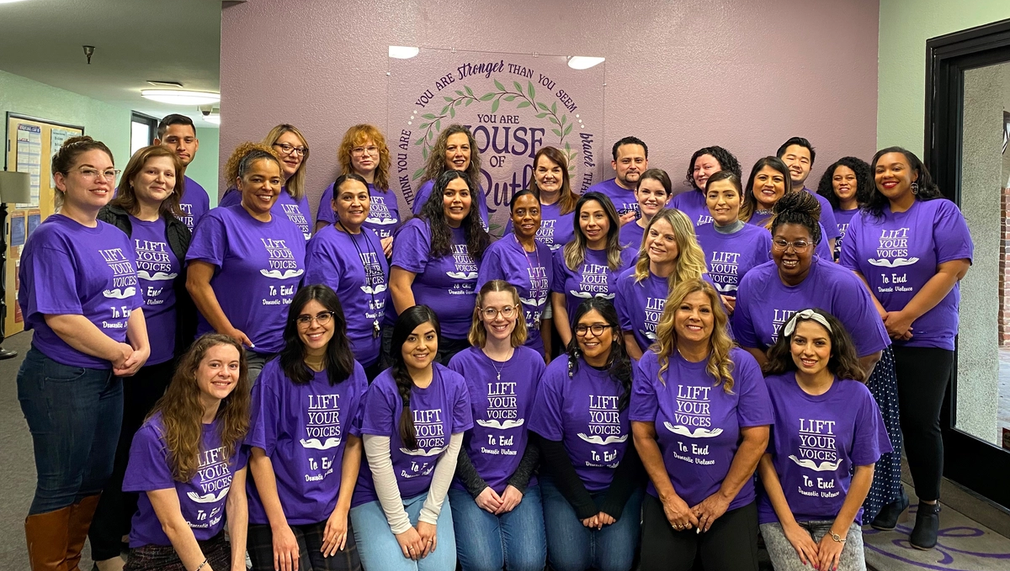Housing First for Survivors of Domestic Violence
Domestic violence is a leading cause of homelessness for women and children in the U.S., directly impacting 1 in 4 women and 1 in 3 teens. House of Ruth uses an evidence-based model to respond to this public health crisis. The Domestic Violence Housing First model is an innovative approach that focuses on helping survivors obtain safe and stable housing as quickly as possible with the use of flexible funds, while providing ongoing supportive services to improve the overall safety and well-being of domestic violence survivors and their families.

What is the primary issue area that your application will impact?
Housing and Homelessness
In which areas of Los Angeles will you be directly working?
San Gabriel Valley
In what stage of innovation is this project, program, or initiative?
Expand existing project, program, or initiative
What is your understanding of the issue that you are seeking to address?
On any single day in California, domestic violence advocates respond to an estimated 5,884 requests for services, and over 1,000 requests go unmet because of lack of resources, reported by the CA Census of Domestic Violence Services in 2021. Nearly half of these unmet requests (42%) are for emergency shelter and housing, the most critical safety service for survivors and their families. According to the 2018 Report on the Status of Women in LA County, over 42,000 calls for domestic violence assistance were made in LA County alone in 2017. In addition, nearly a third (30%) of all homeless individuals in LA County are survivors of domestic violence. These patterns reflect the need we hear from our community. Most of our clients (about 90%) come from low income or poverty level households and need to secure safe housing before addressing additional stressors. We start with housing because we know a person can only start to heal from their trauma when their basic needs are met.
Describe the project, program, or initiative this grant will support to address the issue.
The Housing First model is built on three pillars: Survivor-Driven, Trauma-Informed Mobile Advocacy; Flexible Funding Assistance; and Community Engagement. Advocates focus on addressing the needs identified by survivors rather than on pre-determined needs promoted by agencies. Advocates are mobile and are trained in trauma-informed practice. Many survivors need not only safe and stable housing, but also temporary financial assistance. They may need assistance with issues directly related to housing or funds that are critical to housing stability. Funds are targeted to support survivors so they can rebuild their lives. Proactive engagement with housing providers, other service providers and community members changes how the community responds to domestic violence. The model acknowledges participants have different needs to secure stable housing. Low need is a one-time funding request including food, childcare, utility bill assistance and one-time emergency assistance such as car repair costs, lock changes, limited vocational costs, healthcare costs and transportation. Medium need assistance includes any items in the low need category, rental security deposit, and up to 6 months of rental assistance. High need assistance includes all aforementioned items with up to 24 months of rental assistance to provide the opportunity to build savings, increase employment readiness through vocational or educational programs, and address trauma or other mental health needs during this time.
Describe how Los Angeles County will be different if your work is successful.
Our vision and hope for every person we serve is for them to live a life free from violence. Survivors fleeing from domestic violence should not lose their housing as a result. Too often this is a reality for families impacted by domestic violence. Implementing the Housing First model in Los Angeles County means more financial and emotional support is available to survivors and their families. It will result in less homelessness as a direct result of domestic violence and reduce the likelihood of survivors returning to an abusive relationship out of desperation. When survivors have the financial support to secure their basic needs, while having access to mental and emotional support to start to heal from their trauma, they are much more likely to continue making healthy decisions for themselves and their families. Domestic violence is more than a familial issue; it is a public health issue impacting all of us. When individuals and families thrive, our communities thrive as a result.
What evidence do you have that this project, program, or initiative is or will be successful, and how will you define and measure success?
Since 2016, several domestic violence shelters in California have adopted the Housing First model, including House of Ruth. Impact is measured in several ways with the primary measure being number of participants who remained in stable housing upon exiting the program. Additional indicators of success include participants reporting that they learned more ways to plan for their safety and felt more hopeful about the future. These last two indicators may seem like small goals, but due to the nature of domestic violence, understanding safety planning and feeling hopeful about one’s future are critical indicators of a survivor continuing to live a life free of violence. Last year, out of the 56 participants in the Housing First Program, 20 found permanent housing and 36 received financial support to remain in stable housing. Upon exiting the program, all 56 participants remained in stable housing and avoided homelessness. 100% of participants learned more ways to plan for their safety.
Approximately how many people will be impacted by this project, program, or initiative?
Direct Impact: 40
Indirect Impact: 200